Key takeaways:
- Engaging participants emotionally through storytelling enhances their connection to music and creates a sense of belonging.
- Personal anecdotes and vivid imagery in storytelling help bridge the gap between artists and audiences, fostering empathy and shared experiences.
- Creating anticipated moments and involving the audience in the storytelling process can transform performances into collective journeys.
- Sharing personal stories and memories related to music encourages deeper connections and highlights the universal impact of music.
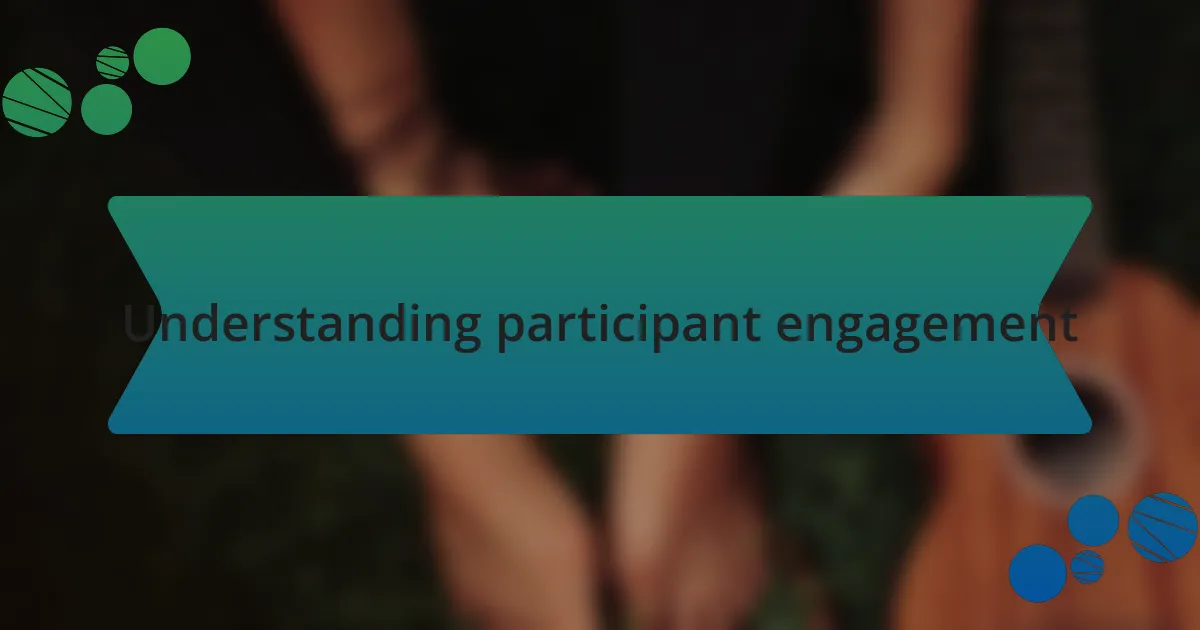
Understanding participant engagement
Engaging participants is all about tapping into their emotions and making them feel a part of something bigger. I remember when I first attended a local electronic music event; the moment the bass dropped, I felt an electric connection with the crowd. Isn’t it fascinating how music creates such deep bonds among strangers?
When I think about what keeps listeners coming back for more, I see storytelling as a powerful tool. It’s not just about the beats; it’s about the journey that each track takes you on. Have you ever found yourself lost in a song that perfectly reflects your mood? That’s the kind of engagement we’re aiming for.
Consider how shared experiences during live shows amplify engagement. Reflecting on my own experiences at festivals, I can still feel the adrenaline rush and the thrill when everyone sang along to a beloved track. This sense of belonging is what draws us in—how can we replicate that feeling in our own community and storytelling?

The role of storytelling
Storytelling plays a pivotal role in creating a lasting connection between the artist and the audience. I recall a moment during a live set when the DJ shared the story behind a particular track. Suddenly, that song transformed for me; it wasn’t just sound anymore—it became a narrative that resonated with my own experiences. How powerful is it that a simple backstory can deepen our emotional connection to music?
When I think about the impact of storytelling in electronic music, I can’t help but draw parallels with the way we share our own journeys in the industry. I once collaborated with a producer who infused personal themes into his work, and it was astonishing to see how listeners responded. They were not only dancing; they were reflecting on their own stories. Isn’t it incredible how a shared narrative can turn a song into a collective experience?
Additionally, storytelling allows us to create anticipated moments in our performances. I remember one festival where the headliner teased an unseen track during their set, promising a backstory that would be revealed at the climax. That anticipation kept the crowd engaged and invested, transforming a typical performance into an unforgettable shared experience. It makes me wonder—what stories are we telling with our music, and how can we enhance that narrative to foster even deeper engagement?
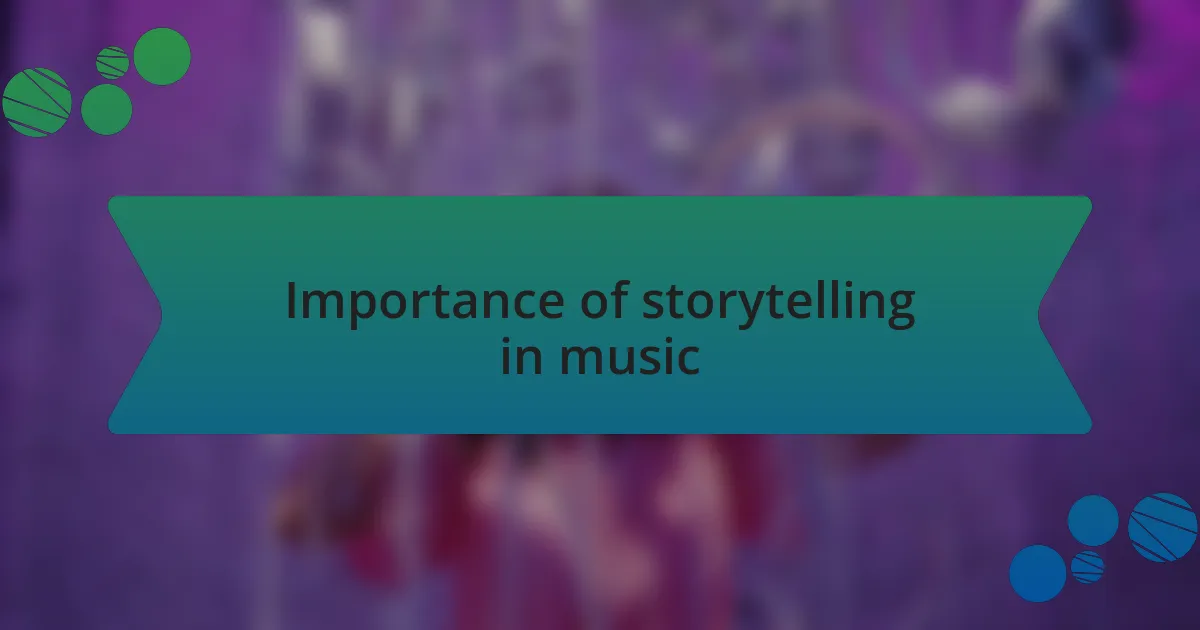
Importance of storytelling in music
Storytelling in music is not just an artistic choice; it fundamentally shapes how we experience sound. I remember hearing a track that had an accompanying video, showcasing the artist’s inspiration—a childhood memory of dancing under the stars. That visual paired with music gave me a glimpse into the artist’s soul, making the song much more than mere beats. Have you ever listened to a song and felt you were part of the story unfolding?
When I delve into electronic music, I realize every track has the potential to weave a rich narrative tapestry. Once, I attended a listening session where the producer shared how each sound was crafted to represent a particular emotion or moment in their life. This transparency transformed the experience for everyone in the room. It was amazing to witness how people reacted—dancing, reflecting, and even discussing their relatable experiences afterward.
Furthermore, the power of storytelling can enhance community bonds among listeners. I participated in a collaborative set where each DJ shared the backstory of their chosen tracks. This made the audience feel like they were on an adventure with us. Could you imagine how much deeper our collective experience could be if we all shared our narratives more openly? Encapsulating personal stories in music fosters a sense of belonging—something truly special in the electronic scene.
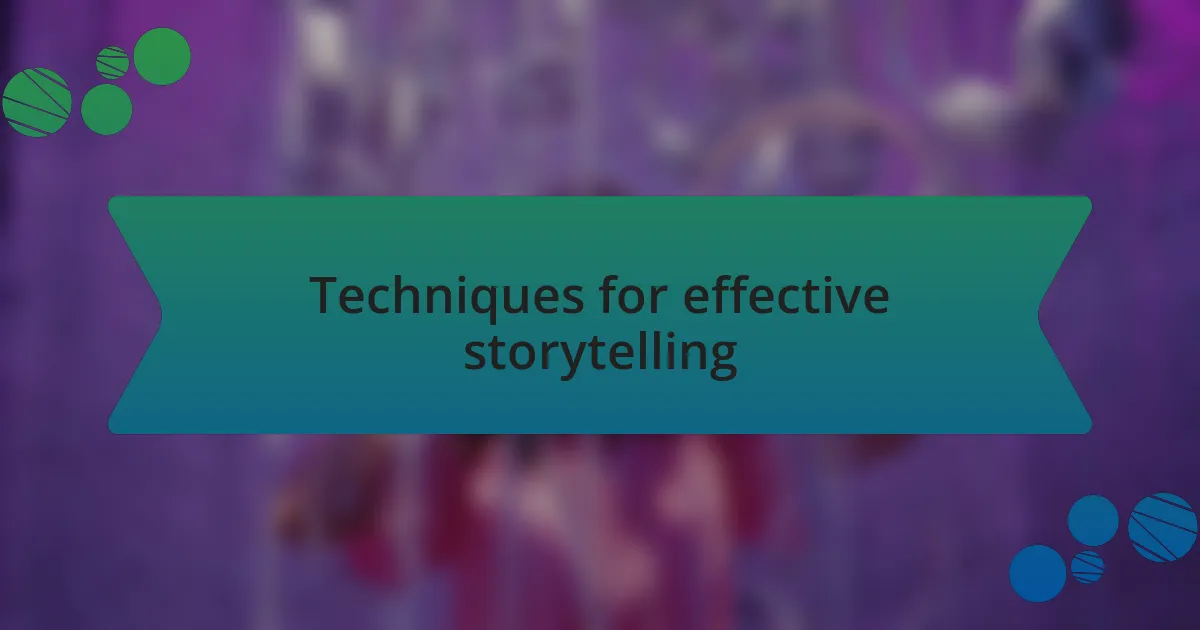
Techniques for effective storytelling
To effectively engage listeners, I often turn to vivid imagery in storytelling. I recall a night at a festival when the headliner narrated the journey of their latest album, painting a picture of late-night city drives and euphoric sunsets. This technique didn’t just provide context; it transported the audience, allowing us to connect our experiences with their narrative. How often do we forget to create mental images in our storytelling?
Another technique is the use of personal anecdotes, which I find powerful in breaking down barriers between the artist and the audience. I remember sharing a story during a set about how a particular track helped me through a tough time. When I saw the audience nodding in understanding, it validated the emotions behind the music, enhancing empathy among us. Have you ever felt an artist’s pain resonate within you?
Lastly, incorporating call-and-response elements can elevate the storytelling experience. During a live performance, I invited the crowd to share their stories through lyrics and beats. The result was an electric atmosphere where the audience felt like co-creators, enriching the narrative with their voices. Isn’t it fascinating how participatory storytelling can turn a simple concert into a shared journey?
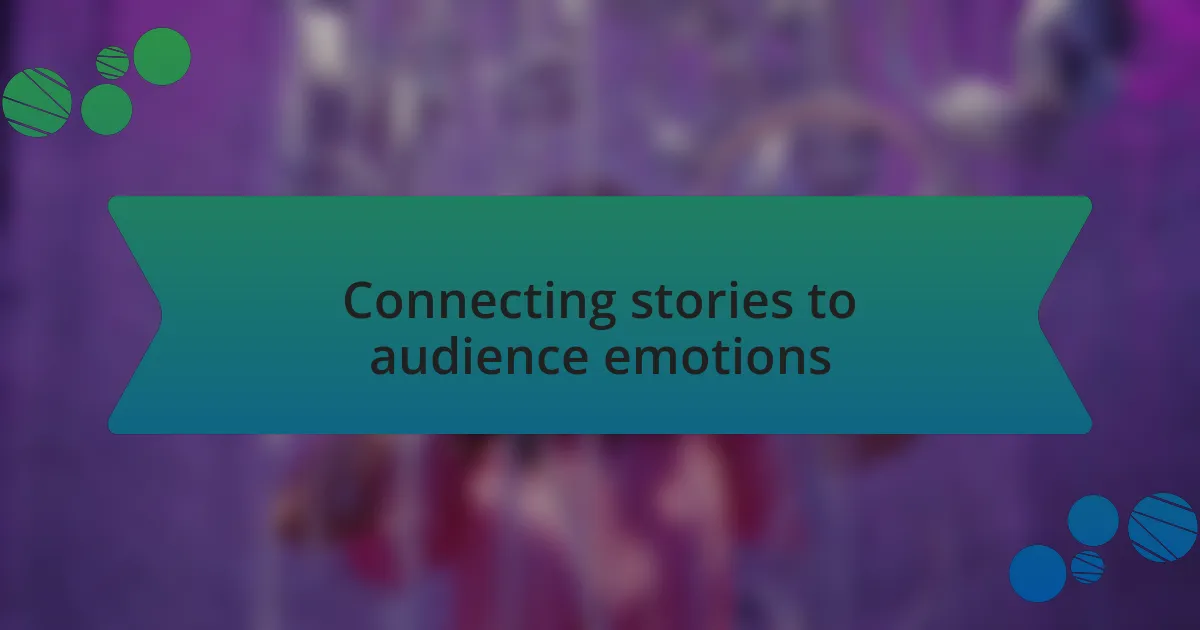
Connecting stories to audience emotions
Every time I prepare a set, I strive to weave emotional threads into my storytelling. I vividly remember a moment during an intimate gig when I shared a story about the first time I ever heard a track that changed my perspective on music. The room was filled with a quiet intensity as I revealed how that experience led me to pursue music as a lifeline. It’s incredible how sharing such a pivotal moment can create an unspoken bond; have you ever had that feeling when an artist’s story resonates so deeply that it feels personal?
Connecting stories to emotions also involves striking the right balance between nostalgia and discovery. There was a time when I played a remix of an old classic, teasing the audience with tales of summer adventures linked to that song. As I recounted those sun-soaked days, I saw smiles and heard laughter, a collective memory igniting a sense of belonging, reminding everyone that those moments are timeless. What songs do you associate with your own unforgettable memories?
Engaging the audience through storytelling is like a pulse that keeps the energy alive. I once asked the crowd to close their eyes and think of a moment when music brought them joy. When I returned to the beat, I could see people reflecting on their memories, and it felt as if we were all spiritually connected in that space. It’s moments like these that deepen emotional ties, showing just how powerful a shared narrative can be. Have you ever felt such a connection while experiencing live music?
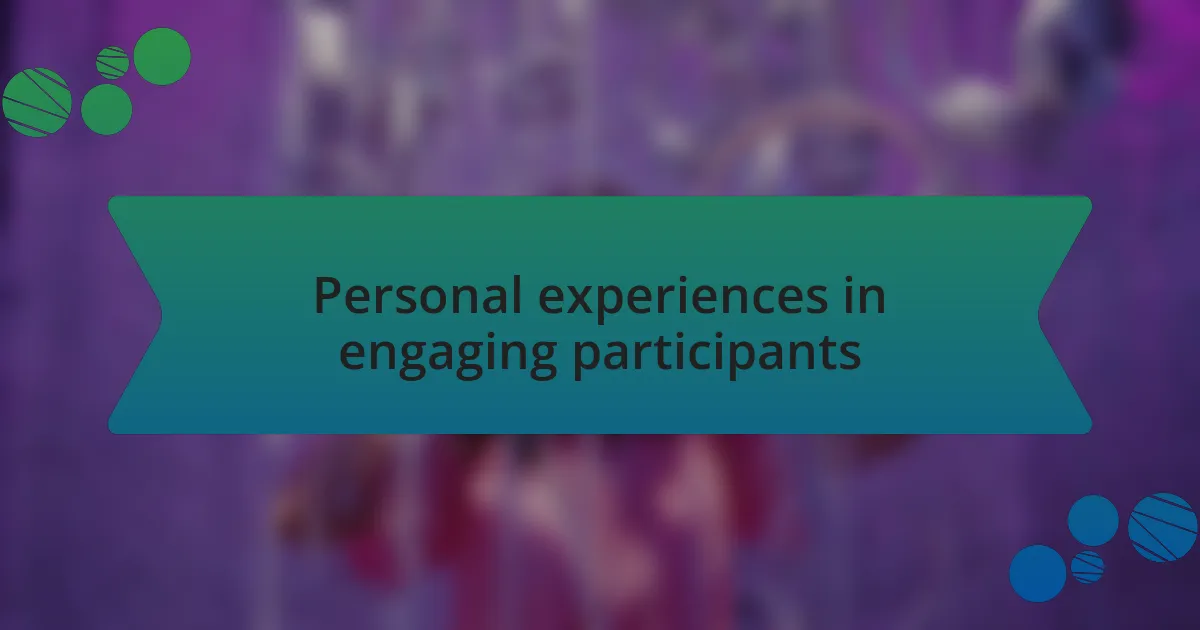
Personal experiences in engaging participants
There was a time when I invited participants to share their own stories about how music impacted their lives. I remember one listener who stood up, eyes lit with excitement, and recounted a moment when a particular track pulled him through a tough breakup. Hearing his story, I understood how deeply music can serve as a catalyst for healing, and that connection inspired me to curate more inclusive experiences. Have you ever felt compelled to share your own story in a similar environment?
In another instance, during a workshop, I encouraged attendees to bring their favorite vinyl records and share the stories behind them. One participant spoke about her grandmother, who would dance around the kitchen while the record spun, and you could see the nostalgia wash over the room. Those shared memories not only sparked laughter but also reminded everyone of the universal language of music. Doesn’t it amaze you how stories can reveal the threads connecting us all?
I vividly recall an event where I incorporated live storytelling between sets. After a DJ mix, I shared a humorous tale of a disastrous gig where my equipment failed. The audience reacted with a mix of laughter and empathy, and that energy transformed the atmosphere. It was a beautiful reminder that being authentic creates genuine connections; do you find that sharing your own mishaps encourages others to open up?